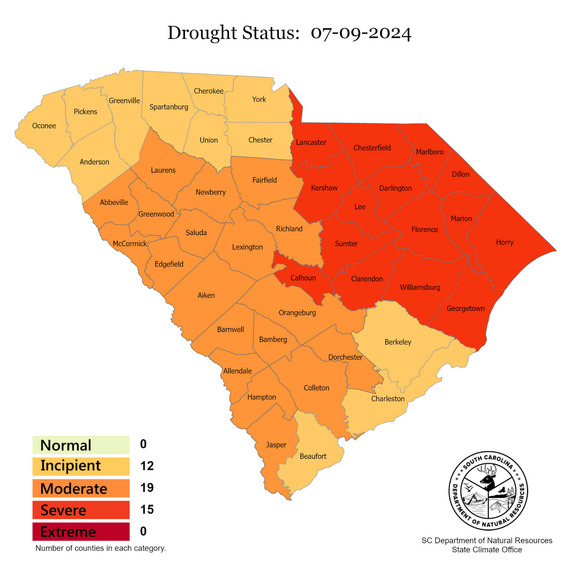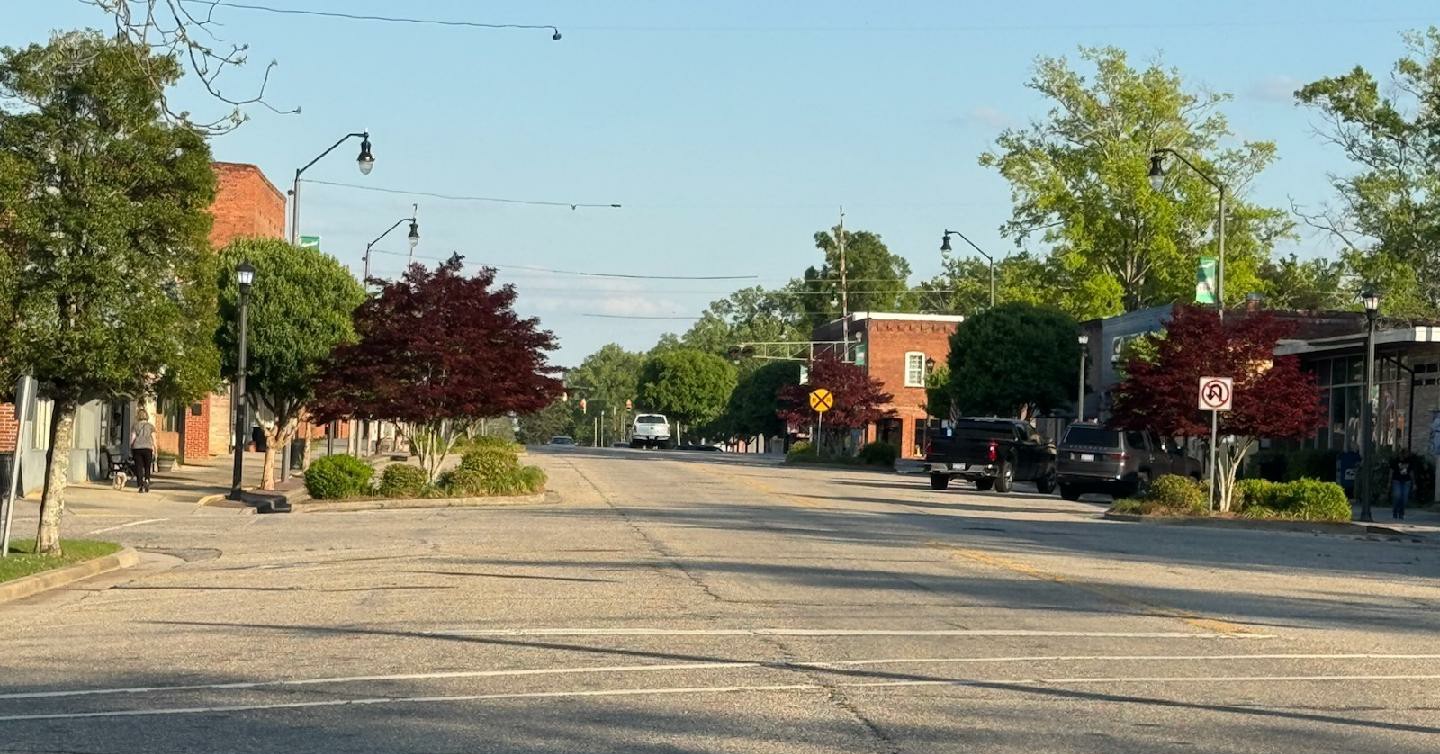July 10, 2024
All of South Carolina has been upgraded to some level of drought as the effects of recent hot and dry conditions are being felt throughout the state.
The S.C. Drought Response Committee, during its meeting via conference call July 9, upgraded the drought designation for all 46 counties, which had previously been normal – or no drought. The committee upgraded 12 counties to incipient, 19 counties to moderate, and 15 counties to severe drought (see map).
Impacts to crops and livestock producers, rapidly declining streamflows and an elevated number of wildfires helped drive the decision.
The three-level increase for those 15 counties –- from no drought to severe — is unprecedented, State Climatologist Hope Mizzell said. The committee tries to avoid even a two-level increase, but for the counties that were upgraded to severe, there was strong support across multiple indicators.
“The weather hasn’t exactly followed the rules over the last month,” Mizzell said. “We experienced a wet winter, a relatively wet spring and then June hit: The rain stopped, and the thermostat soared.”
Since early June, many locations received less than 2.5 inches of rain (25 percent of normal), combined with temperatures ranking in the top 10 warmest on record in South Carolina for the month. There were multiple reports of 100-degree temperatures, with a maximum of 106 degrees at the University of South Carolina station on June 25. Not only were the daytime temperatures elevated, the night-time lows registered much higher than normal. There may have been less convergence of the indicators for the counties upgraded to incipient and moderate drought, but the flash drought is taking its toll statewide. There are “hot spots” of severe drought in counties statewide.
Joe Ghent, Lancaster Conservation District chair and drought committee member representing the Pee Dee, stressed the importance of upgrading the drought to severe based on information he received from farmers, agricultural entities and conservation districts across the area. He said most early planted corn has already been lost due to drought, corn planted later is stressed, soybean planting is delayed and cattle producers are feeding hay because summer grass production has stopped.
The U.S. Farm Service Agency in South Carolina confirmed the drought has severely impacted the corn crop, with many counties looking at greater than 50 percent yield loss. The lack of beneficial rain for the past several weeks has compounded the issue, leaving fields dry and unproductive, said Farm Programs Chief Linda Williams.
If many areas do not receive rainfall within the next few weeks, the 2024 cotton, soybean and peanut crops will also be negatively affected, she said.
Livestock producers are facing similar challenges. Due to deteriorating pasture conditions, , many have resorted to feeding hay as early as the end of June and are concerned about having enough hay to get through the winter months. Some producers have been selling overstock to reduce feeding cost.
Yvonne Kling, Aiken Soil and Water Conservation District chair and a drought committee member representing the western part of the state, pointed out that even though some areas are receiving heavy downpours, the excessive rainfall in a short period of time can also be damaging to producers.
Another factor in the committee’s decision to upgrade was the increase in wildfire activity.
From June 1-July 7, the S.C. Forestry Commission responded to more than 200 wildfires that burned more than 1,200 acres. These numbers represent fire occurrence 77 percent higher than the state’s 10-year average, and the acres burned was 214 percent above our 10-year average.
The high number of fires and much higher acreage burned in these fires is due to dry and hot conditions that have led to rapid evaporation of moisture in forest fuels and the soil.
“Fighting wildfires in high temperatures like we have experienced lately increases the stress on firefighters, and longtime drying of fuels has led to the need for additional resources on many fires that have continued to smolder for days or even weeks after ignition,” said Darryl Jones, forest protection chief with the Forestry Commission, “The Forestry Commission would like to remind everyone to be careful with any outdoor burning, and to postpone burning if you can until conditions improve.”
Scott Harder, from S.C. Department of Environmental Services (SCDES), discussed the sharp declines in statewide streamflow.
“The Little Pee Dee River and Black River are approaching critically low levels,” Harder said. “Without above normal rainfall in the coming weeks, streamflow conditions will continue to worsen as the summer continues. Reservoir levels have not yet been greatly impacted due to adequate winter and spring inflows, however, without above normal rainfall over next few months, more severe declines in reservoir levels are expected.”
Joe Koon, director of water resources with the Department of Environmental Services, reported that currently some systems have implemented proactive measures to alleviate and avoid supply issues. “SCDES will continue to communicate with drinking water systems on any supply issues that arise during these flash drought conditions,” Koon said.
Due to the intensifying drought, the committee requests that all water systems review their Drought Response Plans and ordinances and implement as needed.
The committee is closely monitoring conditions statewide and will reconvene on July 24 to reevaluate the drought status.







